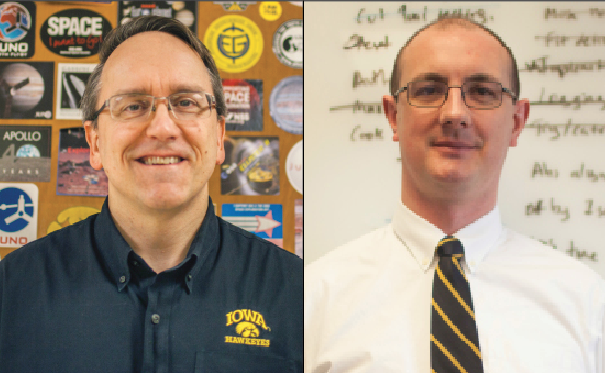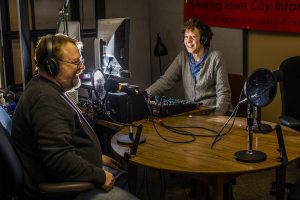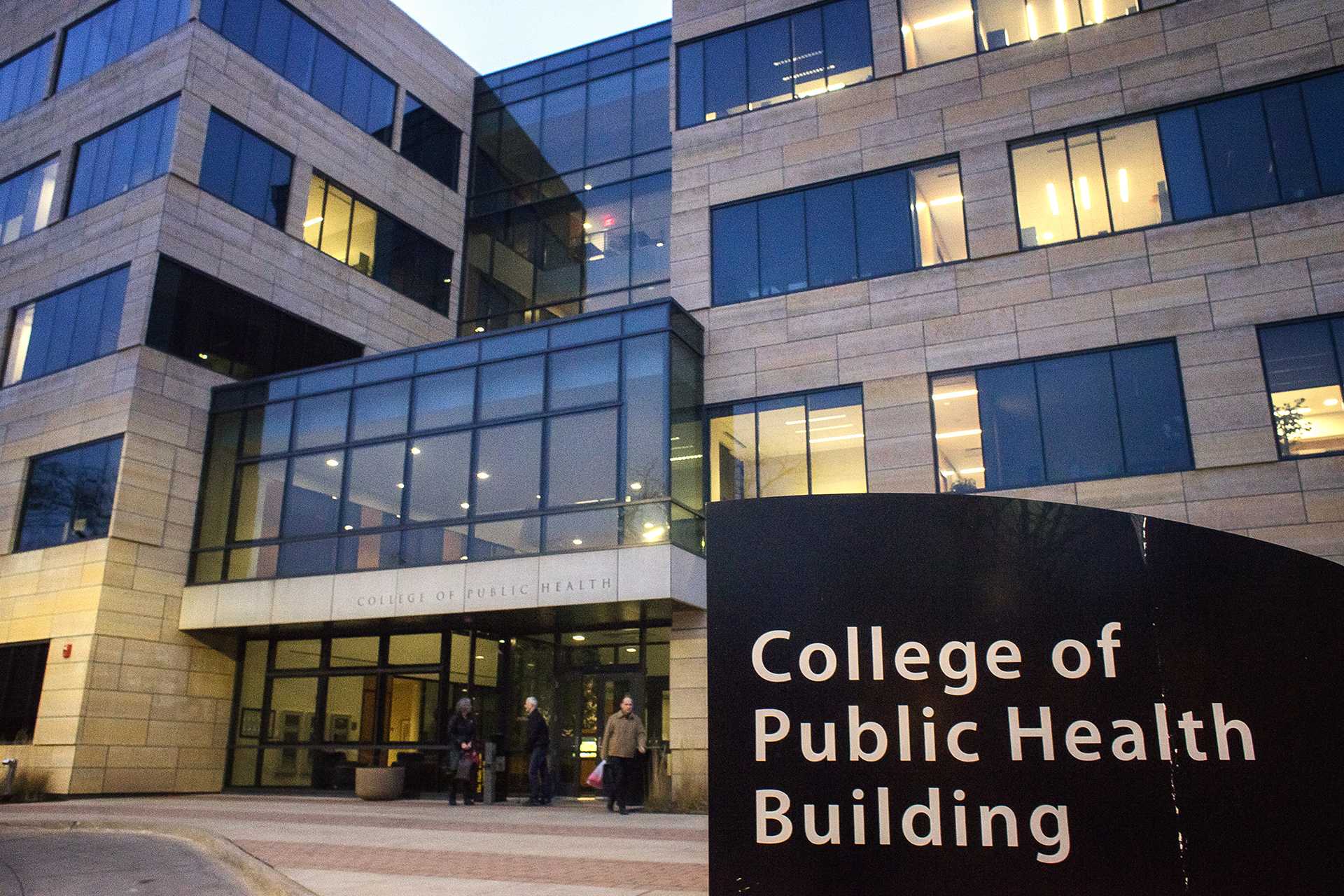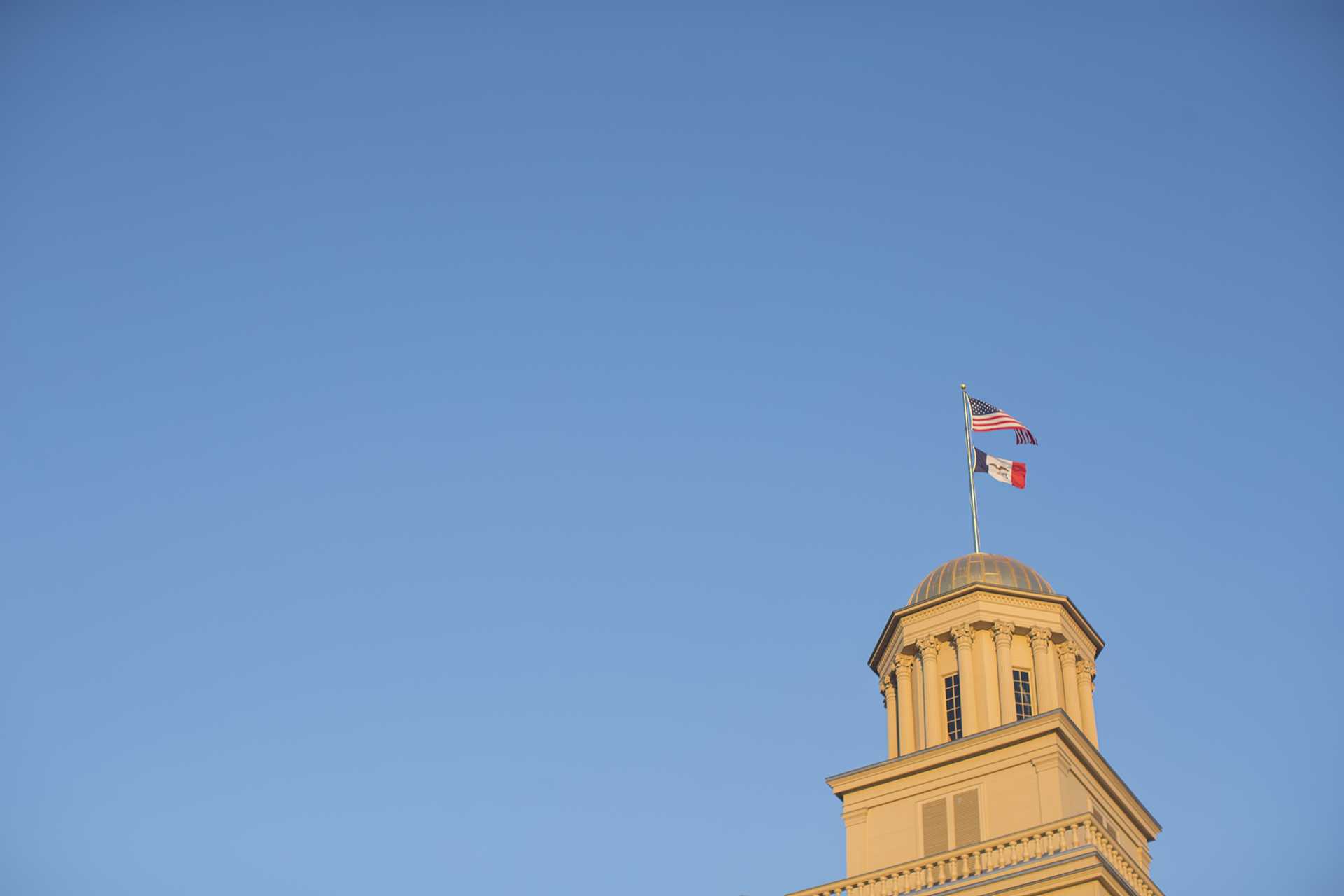UI physicists receive $1M grant from NASA
UI physicists will spend three years designing and constructing an instrument to measure magnetic fields area around earth through a grant from NASA.
UI physics/astronomy research scientist George Hospodarsky stands in Van Allen on Tuesday.
February 20, 2019
Two UI physicists have received a $1 million grant from NASA to spend three years designing and creating a small instrument, combining two existing devices, to measure a wider range of the magnetic spectrum in space.
Currently, two different instruments are used to measure the magnetic wavelength spectrum in space, the fluxgate magnetometer and search coil, said George Hospodarsky, a UI associate research scientist.
With the grant from NASA, Assistant Professor David Miles plans to further develop the instrument through building prototypes and conducting tests, he said. At the end of the three years, they will be able to credibly propose the instrument for use on a large flight ship mission, he said.
The project is called Chimera, after the Ancient Greek mythical creature that is a combination of lion, goat, and serpent because the instrument itself is a combination of other technologies, Miles said.
Hospodarsky has spent his time at the UI building search coils, which can only measure changing magnetic fields in lower-wave frequency, he said. The fluxgate magnetometer measures steady variations in wavelengths, he said.
The size and weight of equipment is a concern in space flight, Hospodarsky said, and combining the two instruments would be useful when it comes to CubeSat, small nanosatellites used by NASA.
“We currently have two different methods that work great — it just takes up two, and especially on a small satellite, that may not have room for both,” Hospodarsky said.
The project divided into four pieces: construction of the fluxgate and the search-coil instruments; improving the function of the instruments; combining the two and miniaturizing them; and conducting calibrations and tests on the completed prototype, Miles said. The testing will prove to NASA that the instrument is ready to be sent into space, he said.
In the past, other scientists have tried to construct instruments of the same measurement capabilities, but Chimera is a new way of doing these measurements, he said.
“We think we can provide significantly better sensitivity than these other technologies and that we can do it in a robust way that we know works or will work on orbit,” Miles said.
In older satellites such as the Van Allen probes, the fluxgate magnetometer and search coil are two separate instruments, said Professor Craig Kletzing, the principal investigator for the probes.
“So, the advantage is that rather than having two separate instruments, you can do it all in one, and so it saves on spacecraft resources and things in that character,” Kletzing said.
With the grant, Miles and Hospodarsky will recruit a graduate student to assist with the process. The goal is for the graduate student to be an expert of the technologies and the construction process, Miles said.
Technology is letting scientists make the instruments smaller and build the satellites cheaper, so new space missions, instead of only having one or two spacecraft, may have five to 50 spacecraft, Miles said.
“Suddenly, the goal is to have a sort of mesh of like maybe 50 to 200 spacecraft all around the world,” Miles said. “So that we can see everything that’s happening in all our near-Earth space.”






